IM is one of several new EV brands in Australia, marketed as a premium offshoot of MG, with a focus on luxurious interiors and technologically advanced driving experiences. Short for Intelligence in Motion, IM is a joint venture between MG’s parent company SAIC Motor and Chinese tech giants Alibaba and Zhangjiang Hi-Tech.
Two IM models are currently available, the IM5 sedan reviewed here plus a higher riding IM6 SUV. Across the 3-variant lineup, both models share identical battery packs, electric motors, 4-wheel steering, interior design as well as price. The only real difference being you get more range with the sleeker IM5 or more space and ground clearance with the IM6.
Prices start from $60,990 driveaway for the Premium IM5 / IM6 variants, featuring a 75 kWh LFP battery operating at 400 V. Interestingly, the step up to a 100 kWh NCM battery in the Platinum ($69,990) and Performance ($80,990) also ups the voltage to 800 V, boosting DC fast charging speeds from around 150 kW to nearly 400 kW.
Our loan car from IM was an IM5 Performance in Raphael Beige paint, which costs an extra $1,000, bringing the total price for this top-spec car to $82,040 driveaway in NSW. It looked identical to the IM5 pictured below, shown here next to an IM6 SUV for comparison.
Sleek exterior design with a hatchback opening
On several occasions throughout the week I noticed people staring at the IM5, although it was hard to tell if they were trying to work out what brand it was or they were just admiring the sleek, attractive design. If it was the former, the “IAMIM5” number plate on this press car would have been a dead giveaway.
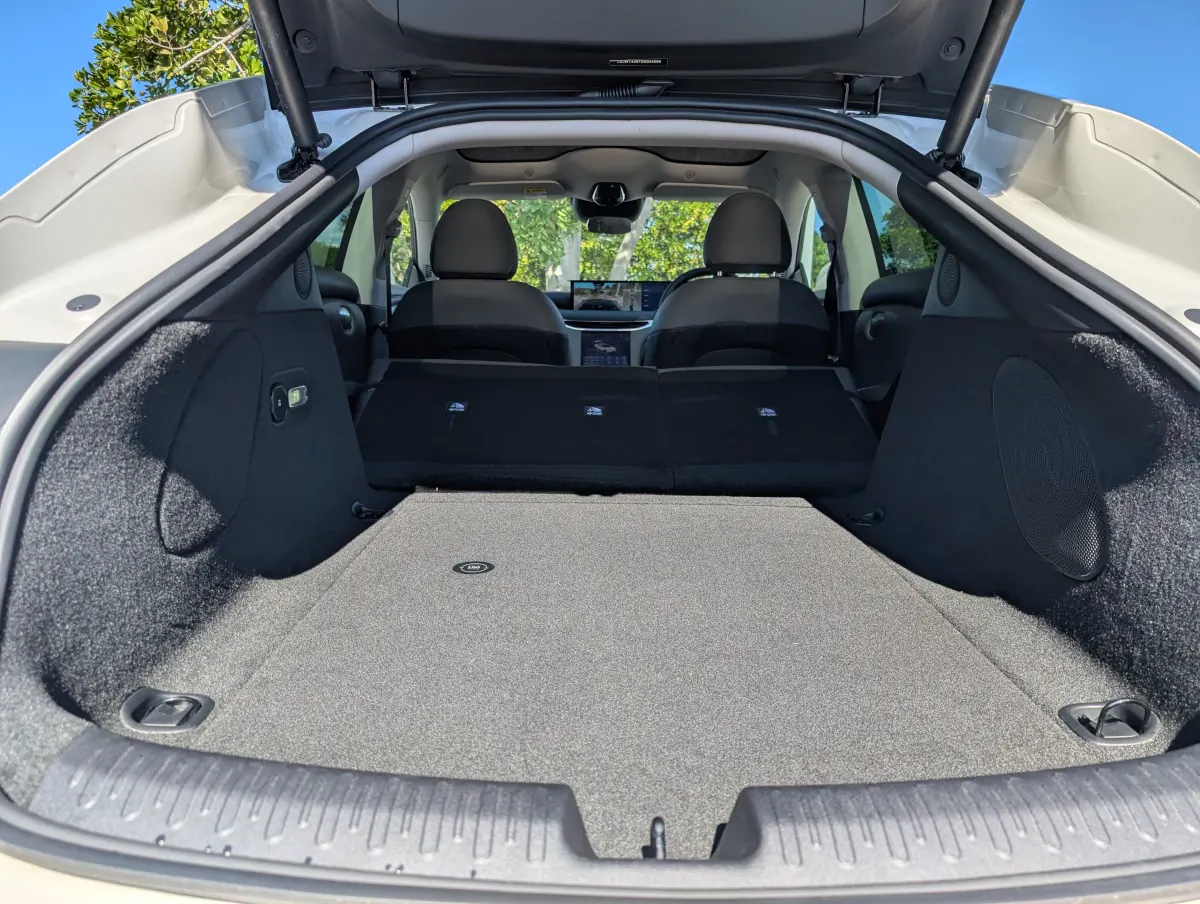
At the back of the IM5 is a large hatchback opening, which adds some practicality to the sedan shaped vehicle. Boot space is average at 457 L, expanding to 1,290 L with the seats folded. The sleek roofline and hinge point does hinder rear visibility though, with a very limited view out of the back, especially when there is an oversized American ute right behind you.
IM has equipped the car with a tiny 18 L frunk, although the mechanical latch to open the bonnet is very hard to find, hidden right up underneath the dash as if they don’t want you to make use of it.
Don’t expect to find extra storage under the boot floor either. Instead you’ll find electrical components and wiring under there which feels a little unfinished in my opinion. I would be careful stowing wet gear in the boot, just in case it leaks through the floor and shorts something out.
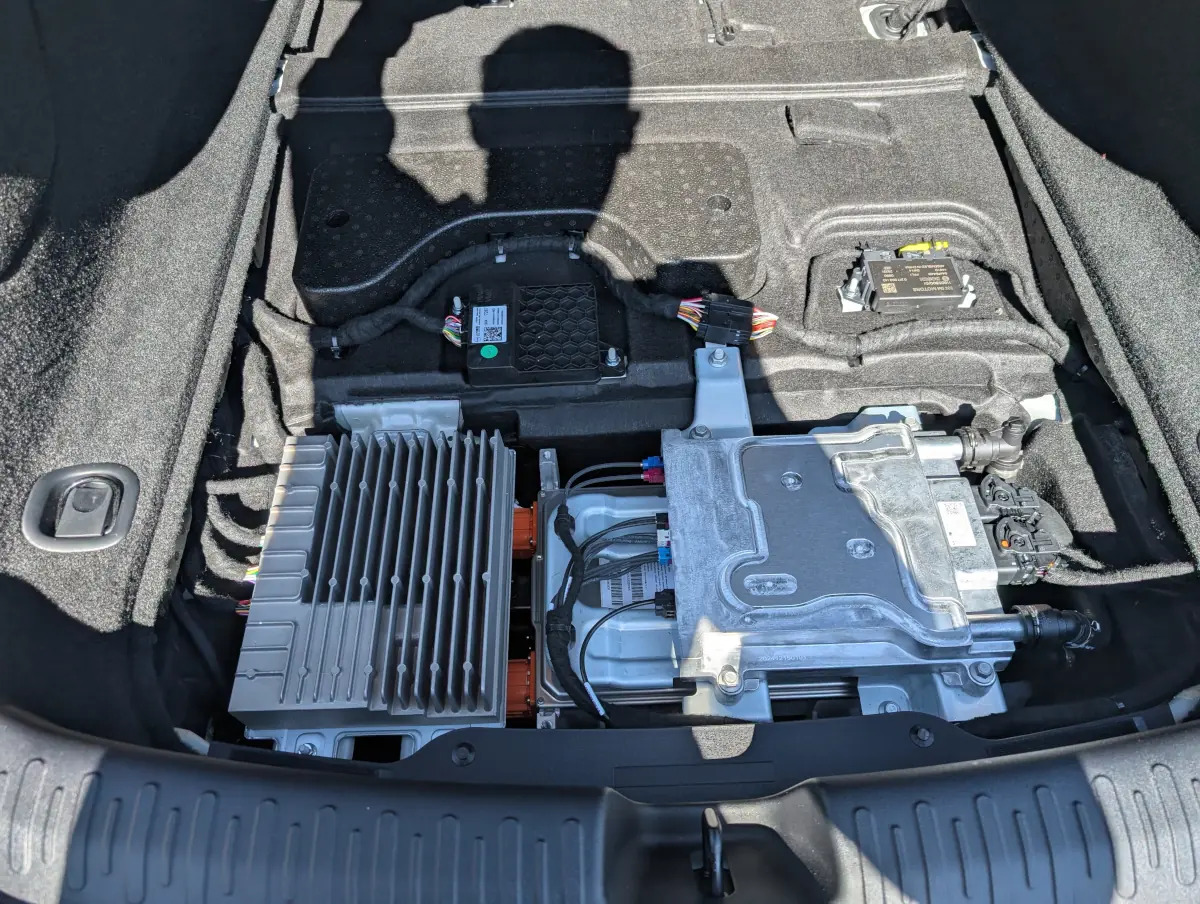
Premium, minimalist interior
Storage limitations aside, the interior of the IM5 feels like a premium space, especially compared to MG’s more affordable models like the MG4 and now obsolete MG ZS EV. Seats are soft and comfortable in both rows, with the exception of a hard middle rear seat, so keep that in mind if you plan on using all 5 seats regularly.
Rear seats in the IM5 can recline into a nice relaxing position via a small lever near the back doors, with all the space and amenities you would expect in a premium vehicle including air vents, USB-C port, map pockets and a fold down armrest with cupholders.
Storage space and amenities up front are also decent, featuring a deep bin under the centre console armrest, good-sized door pockets, open area between the front seats, 2 cupholders and 2 wireless charging pads. There is no glovebox though, which seems to be more and more common these days.
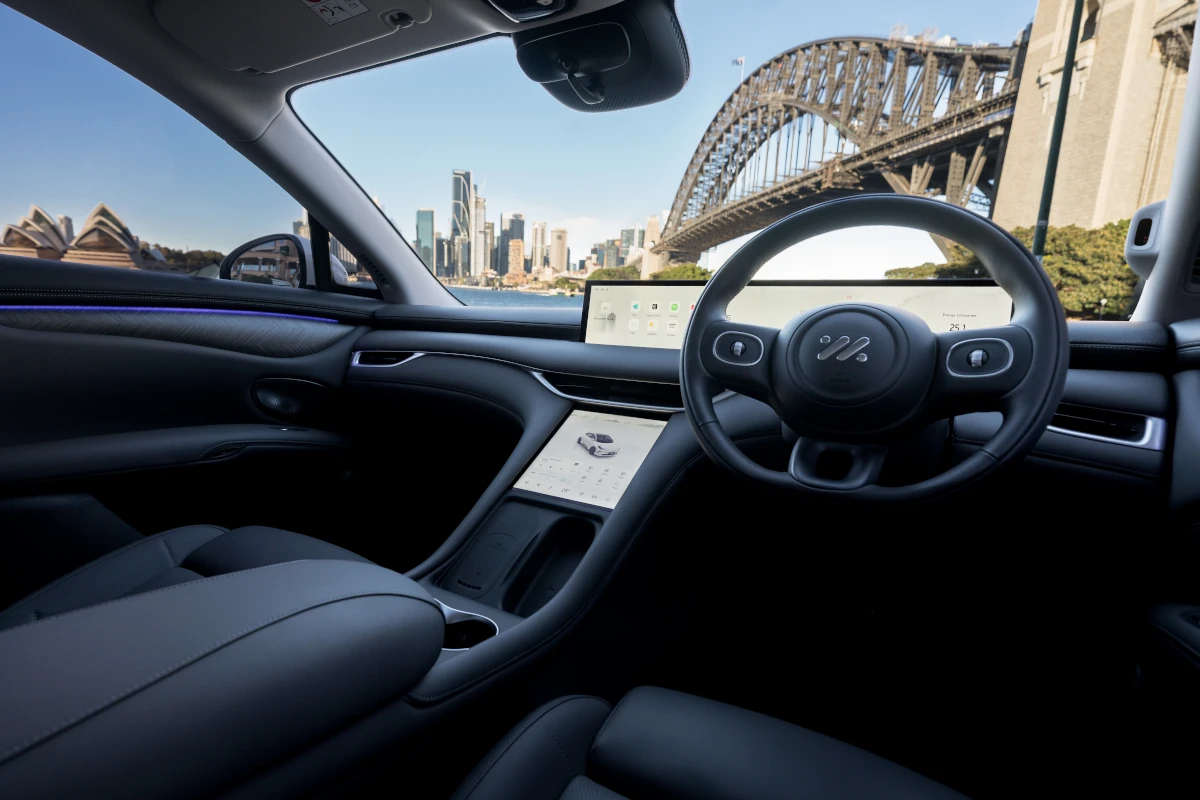
Overall, IM’s interior approach is very minimalist without any physical buttons apart from the steering wheel controls and window switches. People who dislike having audio and climate controls on a touchscreen may need to look elsewhere, although people who are used to a minimalist, screen-based interior will find it easy to jump right in.
Infotainment functions are handled by 2 separate screens, a large seamless 26.3-inch screen mounted on the dash which is divided in half for the driver’s display and central infotainment screen. Below the dash is a square 10.5-inch screen with quick access to car and audio controls, which I found very responsive and intuitive to use.
IM has added some nice touches with the infotainment too, such as the blind spot monitor warning showing up as red or orange bars at either end of the top dash screen as well as the usual light embedded in the side mirrors. I did notice some translation errors in the interface, e.g. “Ramdon” in the climate controls rather than random.
Impressive driving dynamics and self-parking
Setting off in the IM5 is quick and easy, with no pesky start/stop button and fast startup sequence on those infotainment screens. You can simply put your foot on the brake and pull the gear lever on the right-hand stalk down to engage drive.
Before actually moving you might want to disable some of the annoying ADAS features though, cue my usual rant about cars not remembering your preferences between drives. At least IM has made the process easy with a single button option to disable all ADAS features in one hit, possibly not the best idea as that also turns off emergency lane keeping.
Even when all ADAS features were off, the IM5 continued to beep every time the speed limit changed, including every school zone no matter the time of day. I also had one false positive incident where the forward collision system slammed on the brakes due to a car approaching from a side street even though I was watching them closely, confident they were stopping.
After one more rant about weak regenerative braking and no one pedal drive mode, I’ll get to the numerous positive aspects of driving the IM5. I think all EV manufacturers should at least offer a one pedal mode as an option that is saved between drives, even if some people never want to use it.
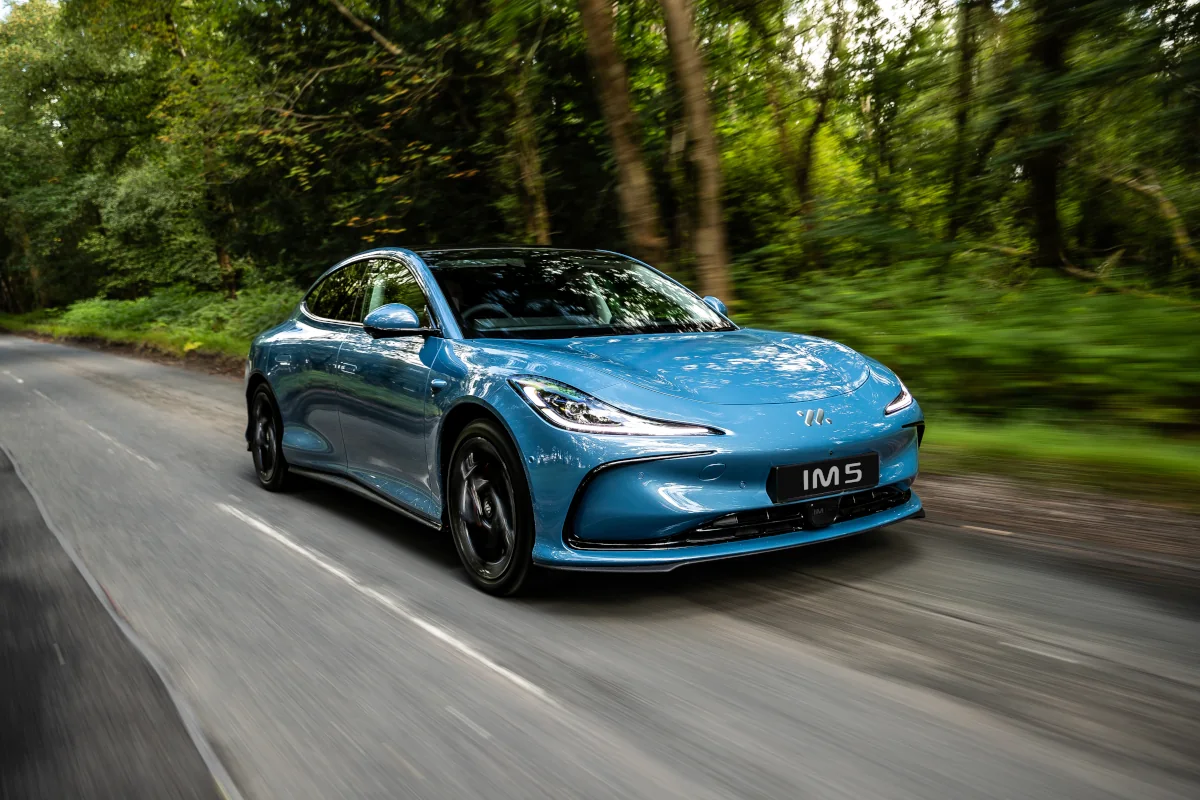
Intelligent driving is highlighted throughout IM’s marketing material for their vehicles, with buzzwords such as IM Digital Chassis and improved handling from the 4-wheel steering system, enabling IM5 to break a 25 year old record for the moose test at 90.96 km/h. Someone might want to update Wikipedia though, as it doesn’t mention the new IM5 record.
These claims felt substantiated in my time with the IM5 Performance. The car has tons of grip around corners, rockets to 100 km/h in 3.2 seconds and doesn’t feel like it is close to running out of oomph either. This is due to the 100 kWh battery in the top 2 variants using a nearly 900 V architecture, paired with Hurricane Motors that spin up to 21,000 rpm.
Acceleration is perhaps not as instantaneous off the line as the Tesla performance vehicles or an Ioniq 5 N. Despite the air suspension and continuously controlled damping of the IM5 Performance, it did not feel quite as hunkered down as the best performance EVs either. For example, I felt a small amount of torque steer when pushing it out of corners.
Having said that, the IM5 is certainly impressive and feels like it lives up to the Performance badge. It is more than capable enough to satisfy everyone apart from the most demanding enthusiasts or people looking for a track car.
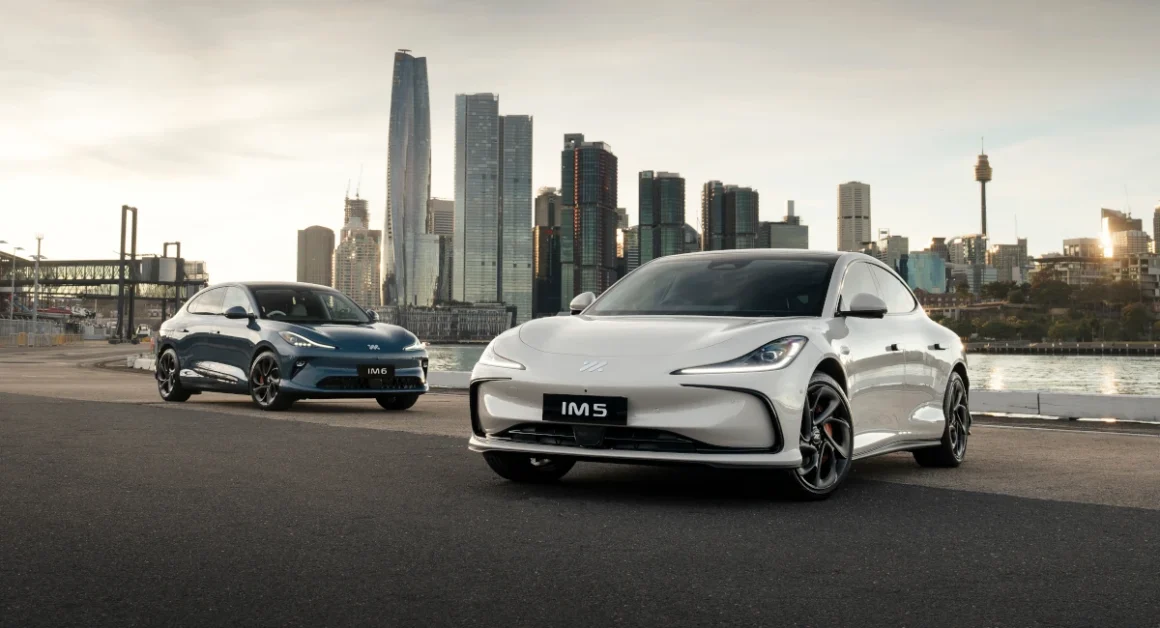
The other main focus of IM’s driving experience is on advanced driver assistance, powered by an Nvidia Orin N chip running software from leading Chinese ADAS provider Momenta. Momenta has also partnered with other automotive brands such as Mercedes-Benz and General Motors.
In Australia, IM’s driver assistance features are currently limited to adaptive cruise control with lane centering, automatic lane changes and advanced self-parking. In China, where regulations are more advanced, Momenta and IM have already launched an L4 robotaxi service operating on roads around Shanghai.
On the highway, engaging Pilot mode is done by pulling down twice on the gear selector stalk. Pilot mode worked very well in my experience, including giving space to cars or trucks in neighbouring lanes when appropriate. Auto lane changes were seamless, although a bit slow to initiate sometimes, which meant I took over too soon the first few times.
IM’s self parking feature was a highlight, significantly better than my experience with Tesla’s Auto park including the new FSD (Supervised) software. The IM5 parks itself confidently while displaying its moves on the screen for you to watch, e.g. “Driving forward 4.5m” and so on.
Efficiency is something IM mentions in their marketing material too, citing use of silicon carbide semiconductors for “unmatched efficiency.” However, my usual testing routine resulted in 184 Wh/km consumed for city driving and 211 Wh/km on the highway, which is above average consumption.
Fast charging, but only with the 100 kWh battery pack
As mentioned above, the entry level Premium IM5 and IM6 are fitted with a 75 kWh LFP 400 V battery pack, which has a maximum DC charging speed of 153 kW. Choosing the Platinum or Performance variant fitted with 100 kWh NMC higher voltage packs boosts the maximum charging speed to an impressive 396 kW, behind only the Zeekr 7X at this stage.
As far as I’m aware, we still don’t have any public charging stations capable of charging this quickly, but when we do you’ll be able to charge those cars from 30 – 80% in just 15 minutes. The charge port is located on the rear passenger side, which is good for kerbside charging and access to Tesla Superchargers without blocking stalls.
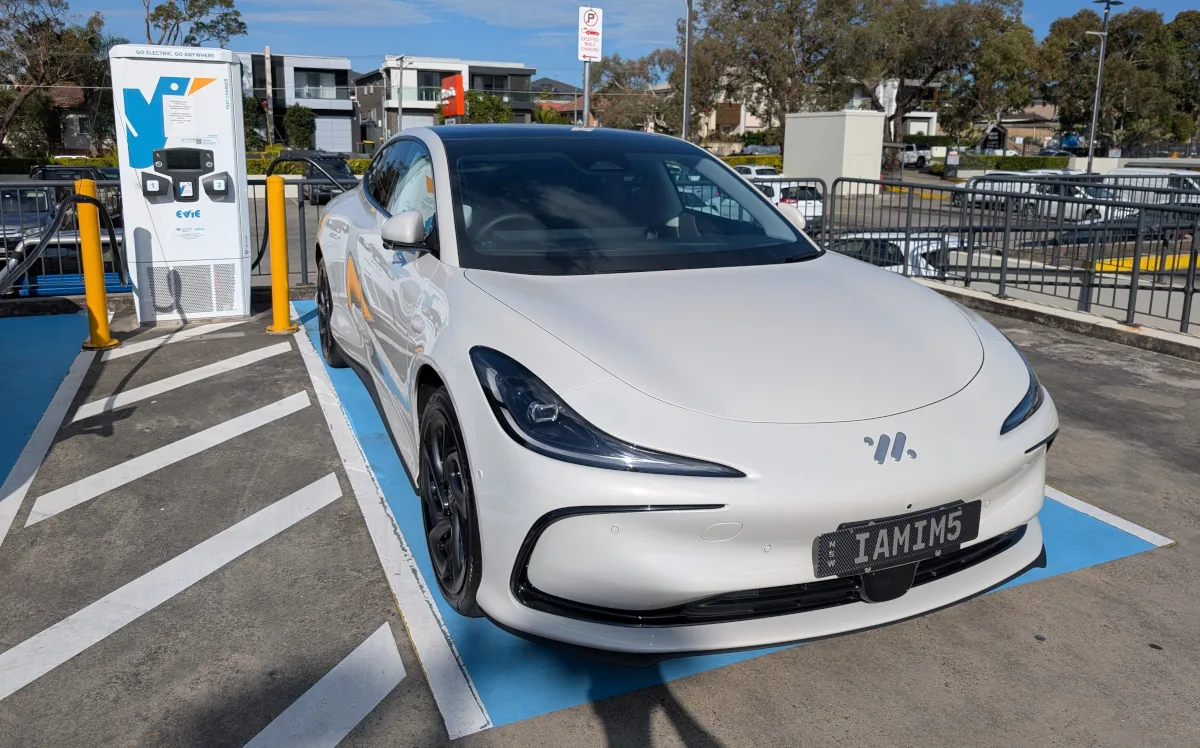
Finding chargers in the IM5 should be easy too, as the built-in navigation system includes EV trip planning with charging stops and a handy button to find nearby chargers when you navigate somewhere with a low state of charge.
IM recommends servicing their vehicles every 12 months or 20,000 km and offers fixed price servicing for $323 at the 1, 3 and 5 year marks, $501 at 2 years for all IM5 and IM6 variants, $1,294 / $1,459 at 4 years for single or dual motor variants respectively.
The car is warranted for 5 years and unlimited km, extended to 7 years if serviced through authorised MG dealers. The high-voltage battery comes with the standard 8 year / 160,000 km warranty, a bit disappointing as MG vehicles are covered for up to 10 years or 250,000 km with the same MG dealer servicing requirement, including the high-voltage battery.
Conclusion
IM has delivered 2 compelling premium EVs with their Australian launch, allowing customers to choose between the sleeker looking IM5 sedan or roomier IM6 SUV and not have to worry about price or interior features when making a decision.
I enjoyed driving the IM5 Performance, as it offers a good blend of premium features and claims about driving dynamics that did not disappoint in the real world. The overall experience should also carry down to the 2 lower variants, as the interior fit and finish are consistent across the lineup.
If you care less about performance and more about range and efficiency, the rear-wheel drive Premium or Platinum are going to be a better match anyway. The middle IM5 Platinum is rated for up to 655 km WLTP range, and should easily achieve 500 km of real world highway range.
Both the IM5 and IM6 are available to order now, with the first customer deliveries expected to take place very soon. As of August 2025, 50 IM6 and 28 IM5 sales have been registered, presumably these have been mostly dealer display, test drive or media cars so far.
Table of key specifications for IM5
| Variant | IM5 Premium | IM5 Platinum | IM5 Performance | ||
| Driveaway price | $60,990 | $69,990 | $80,990 | ||
| Paint colours and options | 5 exterior colours:
2 interior colours:
|
||||
| Battery size | 75 kWh | 100 kWh | |||
| Battery chemistry, manufacturer if known | LFP | NCM, CATL | |||
| Range (WLTP) | 490 km | 655 km | 575 km | ||
| Driven wheels | Rear-wheel drive | All-wheel drive | |||
| Power / Torque | 217 kW / 450 Nm | 300 kW / 500 Nm | 572 kW / 802 Nm | ||
| Maximum charging speed | 11 kW AC, 153 kW DC | 11 kW AC, 396 kW DC | |||
| DC charging time (30 – 80%) | 20 minutes | 15.2 minutes | |||
| Bidirectional charging | Yes: 6.6 kW V2L output via external adapter | ||||
| Exterior dimensions | Length: 4,931 mm Width: 1,960 mm Height: 1,474 mm Wheelbase: 2,950 mm Ground clearance: 135 mm |
||||
| Kerb mass | 2,180 kg | 2,210 kg | 2,298 kg | ||
| Storage space | Frunk: 18 L Boot, rear seats up: 457 L Boot rear seats folded: 1,290 L |
||||
| Service interval | 12 months / 20,000 km | ||||

Tim has 20 years experience in the IT industry including 14 years as a network engineer and site reliability engineer at Google Australia. He is an EV and renewable energy enthusiast who is most passionate about helping people understand and adopt these technologies.

